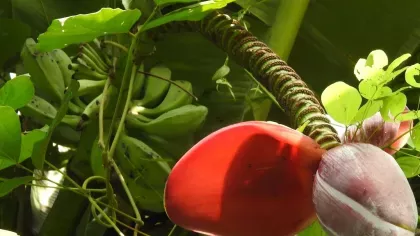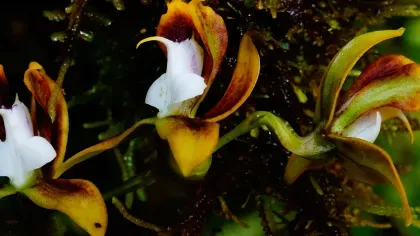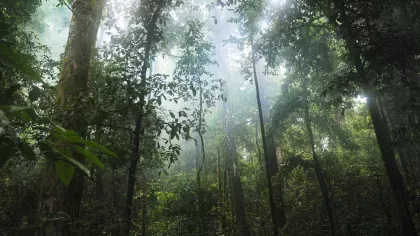30 April 2021
Myriad Myrcias in many shades of green
Untangling a significant, yet understudied, South American genus

While science and technology are accelerating our ability to ‘access all areas’, large tracts of inaccessible and poorly studied habitats remain, containing a plethora of poorly understood biodiversity.
Once we’ve arrived in our tropical rainforest, how do we go about untangling the many shades of green’ we are confronted with into something more tangible?
Identifying the component species in this ‘amorphous blob’ is fundamental to understanding the ecosystem and its function, which paves the way towards effective conservation.
Take the genus Myrcia – one of the most species-rich genera of trees in South America.
Myrcia flowers are not showy but the group can be the most dominant tree in under-explored, biodiverse, and ecologically fragile parts of its range, making it an excellent example of the understudied ‘green-backdrop’ to other, flagship species.
Yet, these trees are notoriously hard to identify, even to genus level, let alone species.
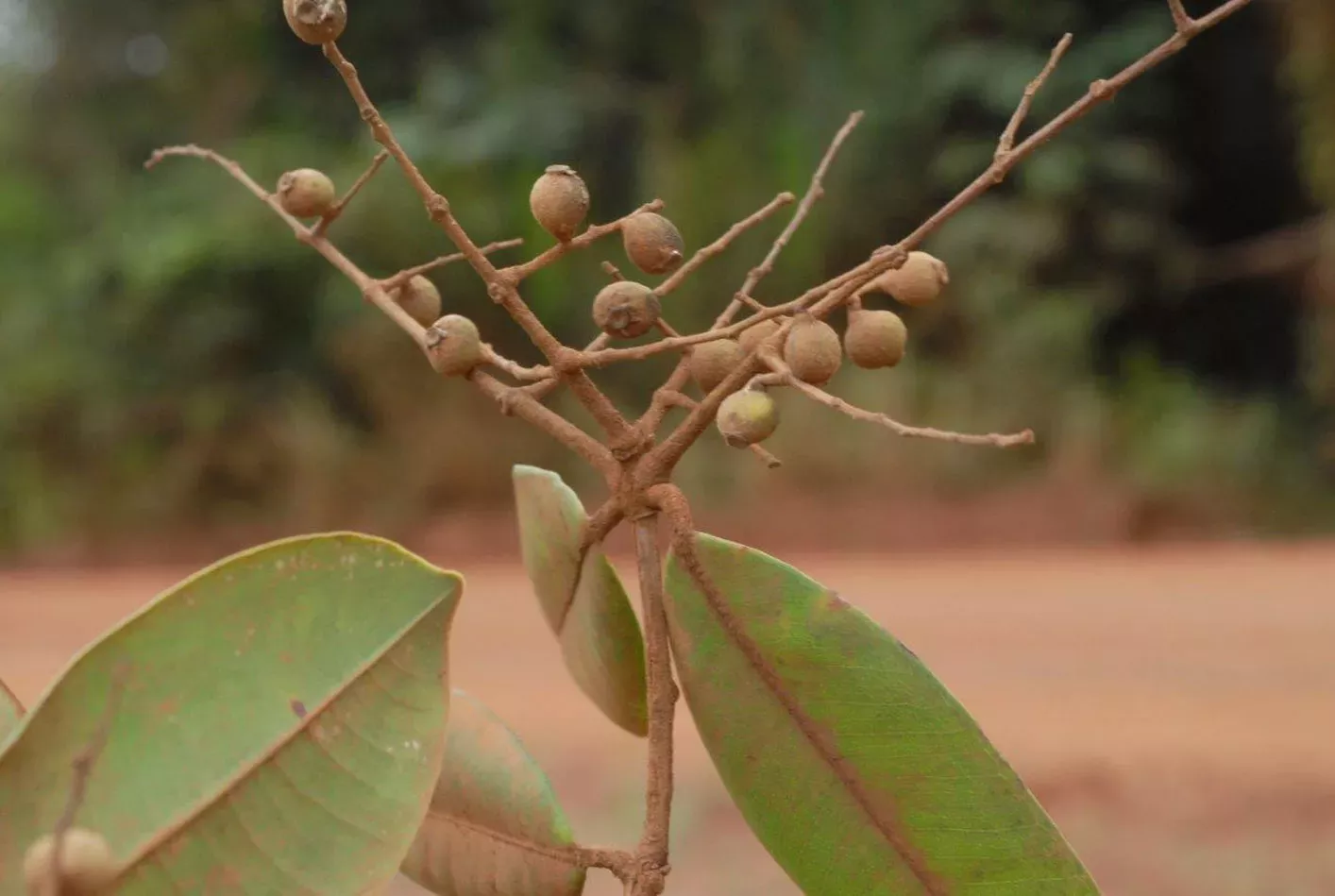
Myrcia monograph
The journey to identification starts with fieldwork, often in some of the world’s most biodiverse regions, such as the Amazon rainforest, to explore and collect local flora.
Material is distributed to herbaria across the globe, including our own Herbarium at Kew, where we hold millions of specimens, some over 300 years old.
Taxonomists at Kew are working towards the completion of a detailed monograph for the genus Myrcia.
Monographs are definitive works on a particular group of plants and represent the gold standard for communicating information in botany.
Flowers, fruits, buds, and leaves are measured, compared, and described; the difference between species can be as obvious as flower shape and colour, or as subtle as tiny hairs.
Completion of the monograph will provide a key resource for researchers, horticulturists, and many other stakeholders.
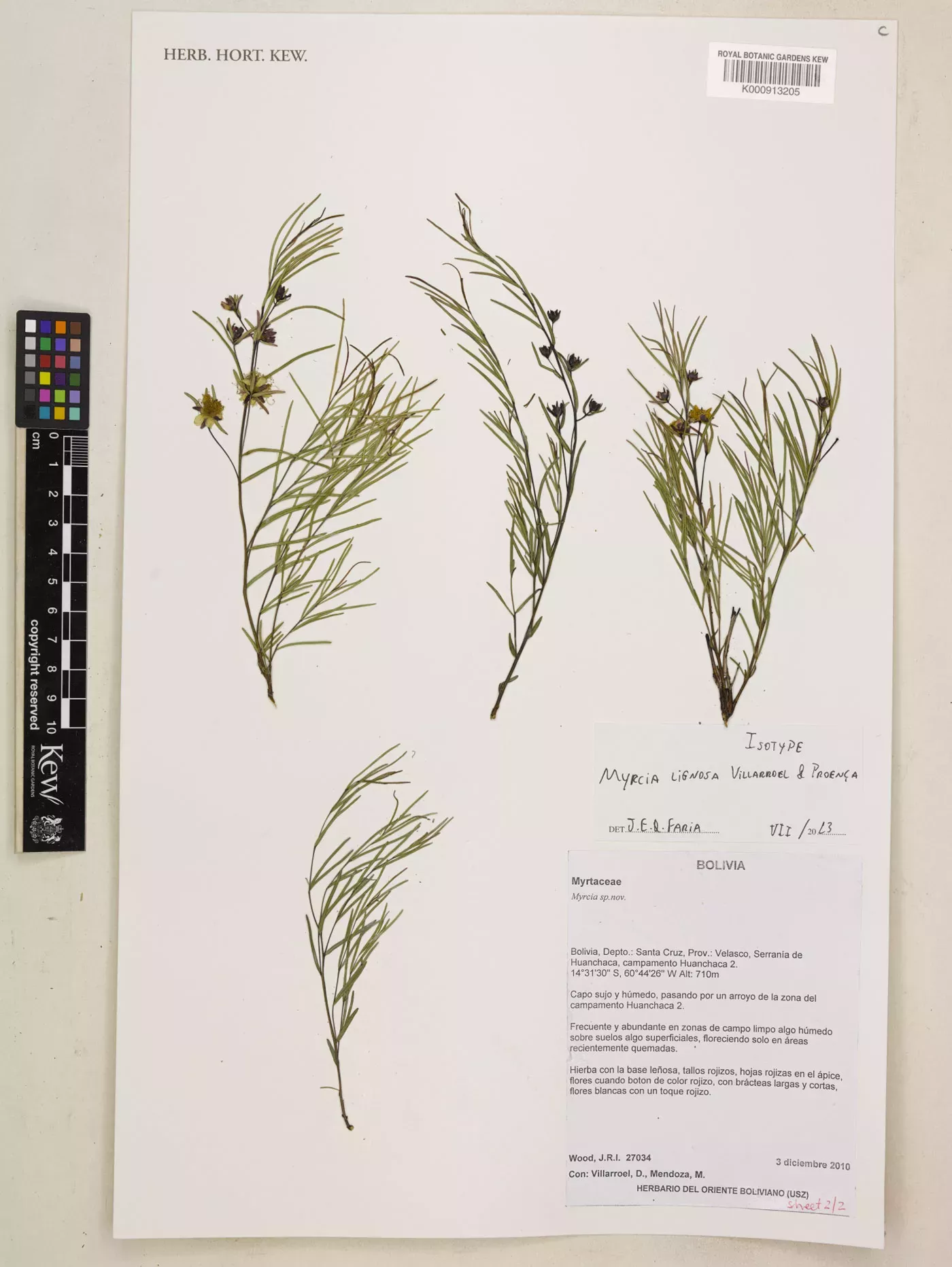
Examining extinction risk
Amongst other services, resolution of taxonomy enables better-informed conservation assessments, allowing us to identify processes that could be threatening a species within its range, and ultimately detect those most at risk of extinction.
So far, Kew’s Plant Assessment Unit has published assessments for over a third of all Myrcia species on the IUCN Red List, with many more in the pipeline.
These assessments have identified several ubiquitous threats to these important plants.
Most notably, extensive deforestation for agriculture and urbanization, the effects of which are evident in the Atlantic Forest, where over 60% of species of section Calyptranthes (a section within the genus Myrcia) are threatened.
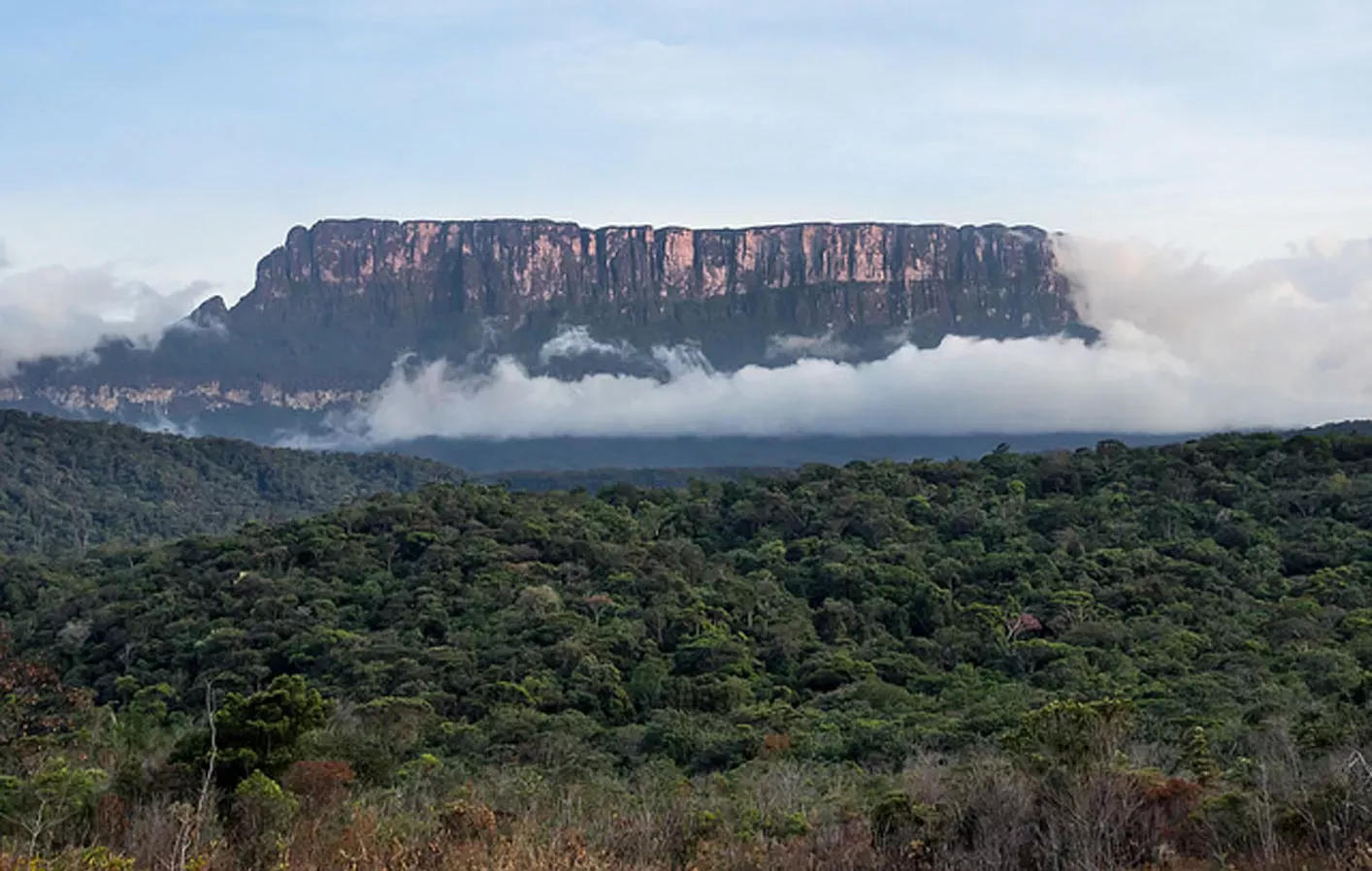
The uses of Myrcia
Though not yet thoroughly studied, the contribution of Myrcia species to ecosystem function across South America is expected to be significant, particularly in the Atlantic Forest of eastern Brazil where it can be hard to go a few steps without passing one.
The diversity of the genus has culminated in high levels of local use, providing rural communities with edible fruit, spice and pigment, as well as material for construction and fishing.
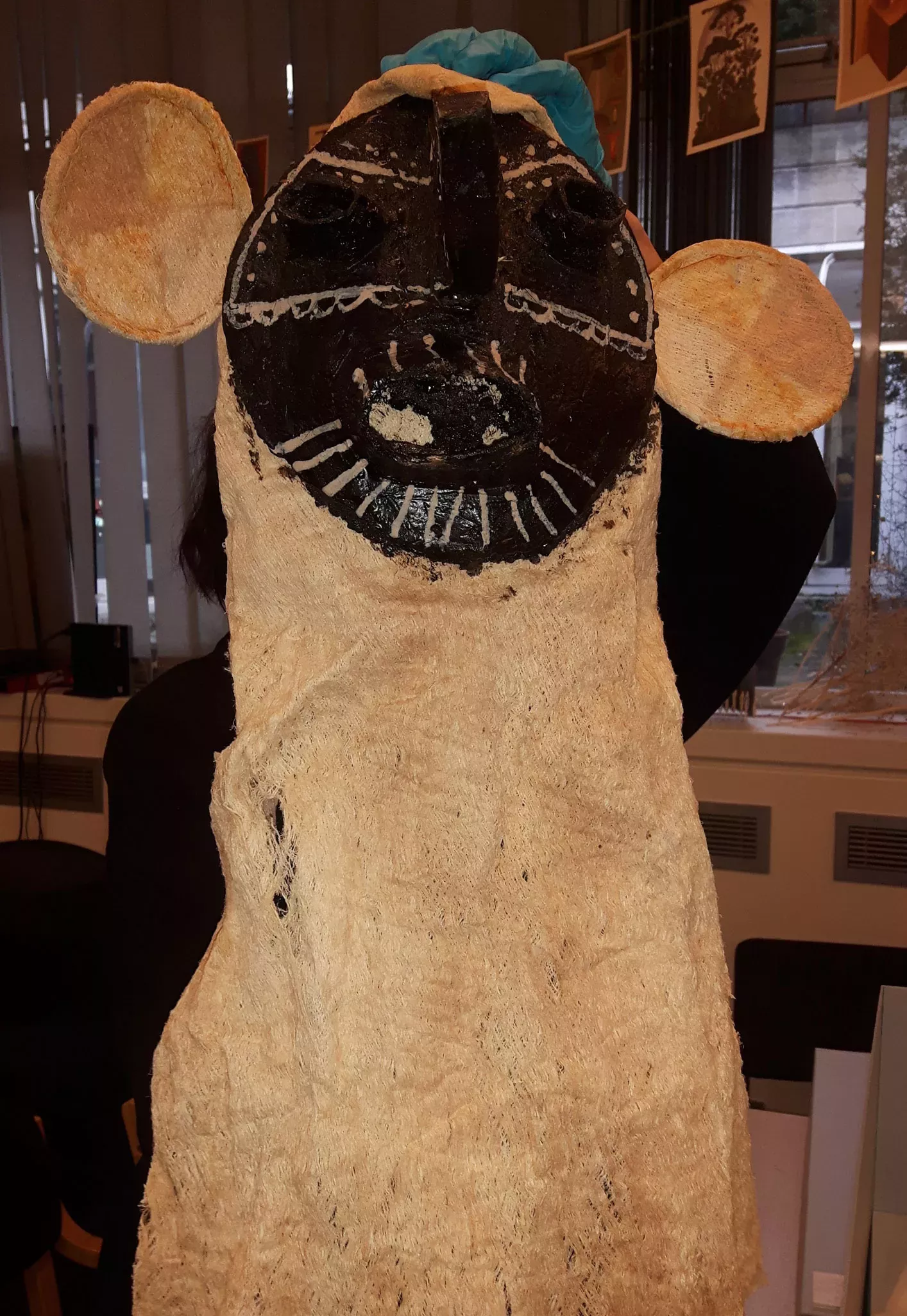
Alongside these uses, a loose group of Myrcia, interchangeably referred to as ‘pedrá-ume-caá’, or ‘insulin plants’, have been widely used in Brazil for their antidiabetic effects, drawing greater pharmacological interest in the genus.
Given its abundance across Central and South America, the genus has great potential for natural reforestation; the pioneer species, Myrcia splendens, is one of a number of species that have been used in reforestation projects.
Completing the monograph of Myrcia will facilitate targeted research into areas such as pharmaceutical analysis and ecosystem restoration, as well as contributing to the understanding of Myrtaceae and other neotropical families.
Unlocking the unknown
With the considerable effort of many scientists, the c. 700 species in genus Myrcia are en route from unknown to understood.
In the future, we will continue to collaborate internationally to provide an interactive, illustrated, online taxonomic platform.
Equipped with an accepted taxonomy and extinction risk assessments, we will be able to target species for conservation, and provide the foundations to accelerate a diversity of research.
While this progress may bring a few pixels of our tropical rainforest into focus, numerous other neotropical groups remain a green blur to many.
The continued work of scientists is vital if we want to sharpen this picture so as to heighten appreciation of rainforest trees and unlock the potential of our most biodiverse habitats.
References and reading material
Canteiro, C. & Lucas, E. (2018) Myrcia racemosa. The IUCN Red List of Threatened Species 2018: e.T113043882A113050451. https://dx.doi.org/10.2305/IUCN.UK.2018-2.RLTS.T113043882A113050451.en.
Canteiro, C. et al. (2019) Enhancement of conservation knowledge through increased access to botanical information. Conservation Biology, 33: 523-533.
Canteiro, C. & Lucas, E. (2019) Myrcia splendens. The IUCN Red List of Threatened Species 2019: e.T62780A57981288. https://dx.doi.org/10.2305/IUCN.UK.2019-1.RLTS.T62780A57981288.en.
Canteiro, C. & Lucas, E. (2020) Myrcia salticola (amended version of 2019 assessment). The IUCN Red List of Threatened Species 2020: e.T113044359A174154726. https://dx.doi.org/10.2305/IUCN.UK.2020-2.RLTS.T113044359A174154726.en.
Grace, O. M. et al. (2021) Botanical monography in the Anthropocene. Trends Plant Sci, 26: 433-441.
Nic Lughadha, E.M. et al. (2019) Harnessing the potential of integrated systematics for conservation of taxonomically complex, megadiverse plant groups. Conservation Biology, 33: 511-522.




